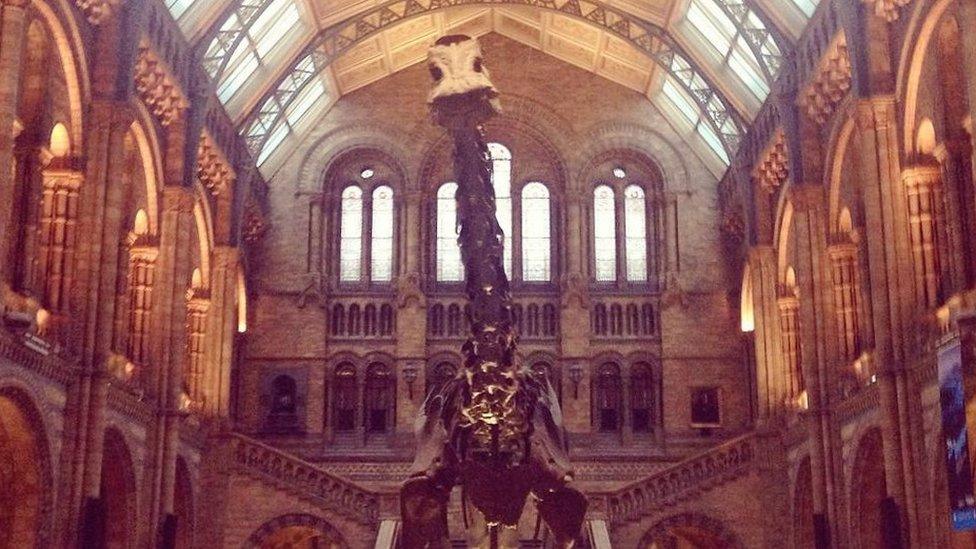Dippy dinosaur's national tour stops announced
- Published
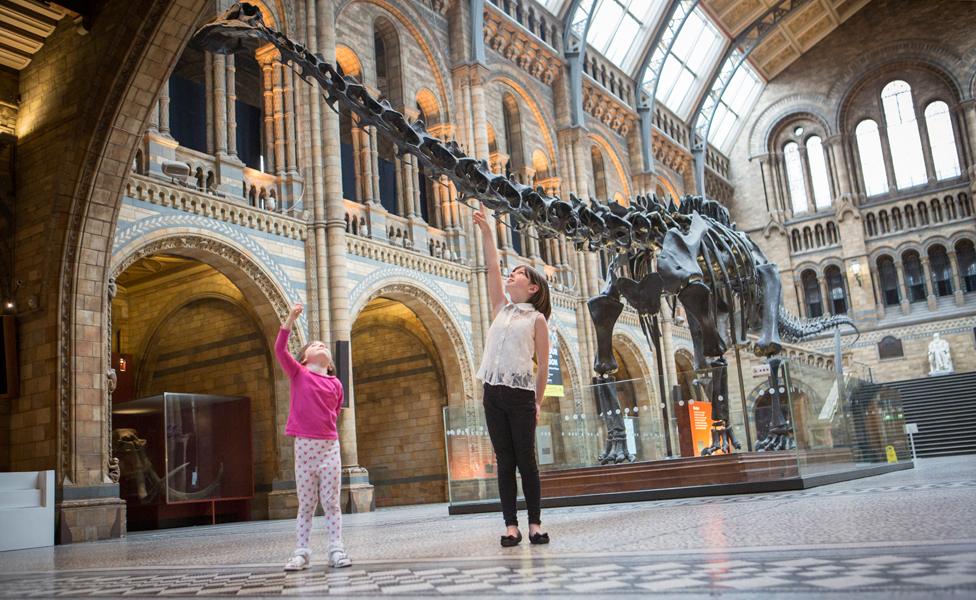
Dippy is actually a copy of an American dinosaur specimen and was unveiled in London in 1905
The UK's most famous dinosaur is going to start its national tour on southern England's Jurassic Coast.
Dorset County Museum, external will be the first place to host Dippy the Diplodocus, external when it temporarily moves out of its London home.
The capital's Natural History Museum is having a big front-of-house makeover.
A blue whale skeleton is being put in the dinosaur's prominent position by the main entrance - and so Dippy is going on the road.
The plaster-of-Paris model - so loved by generations of visitors - will be on show in London for the last time on 4 January.
Conservators will then spend the next 12 months getting it ready for its trip around the UK.
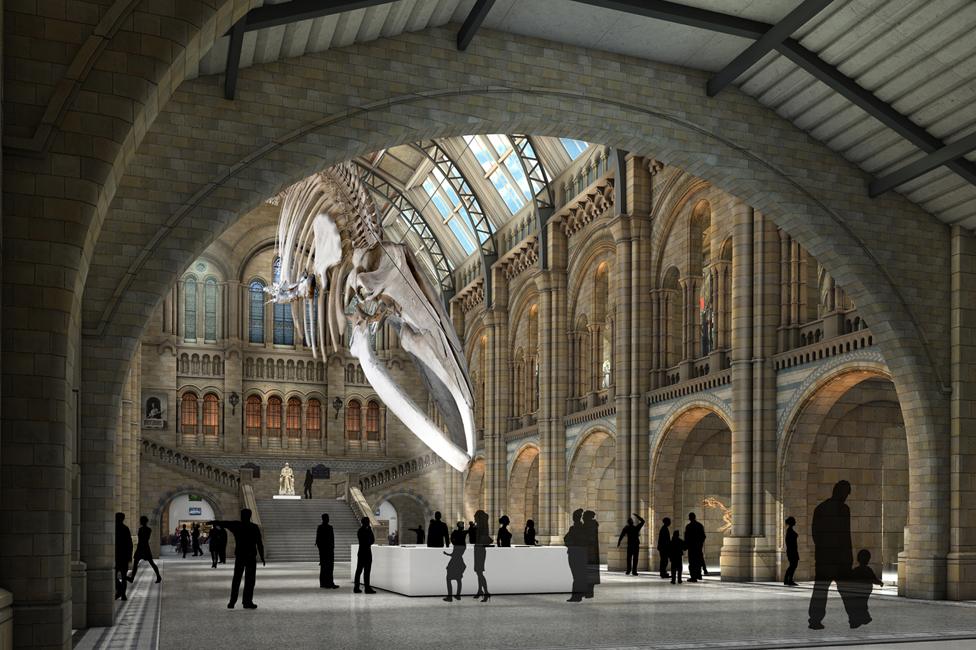
The blue whale will hang from the ceiling of the NHM's Hintze Hall in a diving pose
This will involve re-making some parts and giving it a new, modular support structure, or armature, to facilitate frequent packing and unpacking.
After Dorset, 21m-long Dippy will visit Birmingham Museum; Ulster Museum; Kelvingrove Art Gallery and Museum, Glasgow; Great North Museum, Newcastle; the National Assembly for Wales; Number One Riverside, Rochdale; and Norwich Cathedral.
At each location, the dinosaur will be used as the centrepiece of a display that will highlight local natural history and nature collections. The tour will end in late 2020.
Director of the Dorset County Museum, Dr Jon Murden, said: "We are so excited to be welcoming Dippy on Tour here in 2018 at the heart of the Jurassic Coast World Heritage Site. As the birthplace of palaeontology, there is nowhere in the UK more appropriate for Dippy to start the tour than Dorset."
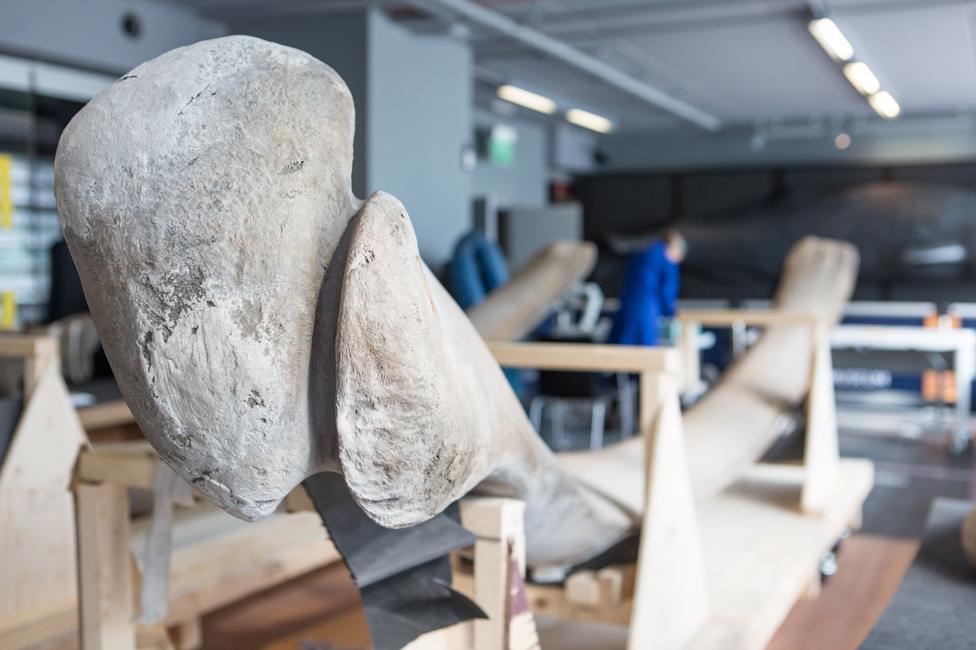
Giant mandibles: The bones of the blue whale are currently being assessed and cleaned
Specialists are already deep into the task of preparing the blue whale ready for its new role.
It is due to be suspended in a dramatic diving pose from the ceiling of the NHM's Hintze Hall. The grand opening will be next summer.
The bones were recently removed from their old display position in the mammals gallery and taken into a laboratory.
"There was an amazing carpet of dust on the whale's bones," said Lorraine Cornish, the head of conservation at the NHM.
"In many ways it was very beautiful - like a Mars or a Moon surface. And so the first thing we had to do was clean all that away using vacuum cleaners, to see the surface more clearly, to check if there were cracks or issues we hadn't spotted before," she told BBC News.
Lorraine Cornish: "We've had a unique, up-close look at an amazing specimen"
The near-4.5-tonne whale specimen is more than 100 years old, and - unlike Dippy - is the real deal; it is not a cast.
It was acquired for the NHM shortly after the institution opened in 1881.
The animal had beached at Wexford on the southeast coast of Ireland, and London's curators paid £250 for the carcass. Nearly every bone is present, and they still leach oil.
The workmen who first put the whale on public display in 1935 probably thought it would never be taken out of its gallery. This might explain why it was shot through with long iron rods and cables.
Some of the alterations made to accommodate this scaffolding are really quite brutal.
"They just drilled very big holes and put very large bolts in the bones, and very large pieces of wire cabling. As conservators, we'd not now drill a hole in a specimen," said Lorraine Cornish.
"It's scientific data for us; it's one of our collection items. Wherever possible we'll re-use some of those holes but we'll add additional armature to the outside to make sure the whale is protected when it suspends above the public."
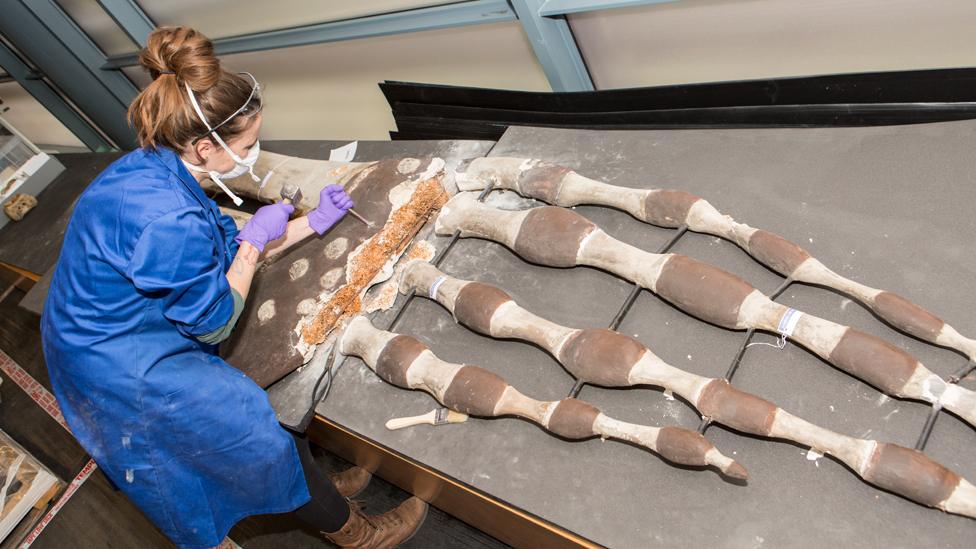
Whale flipper: The Wexford specimen is very nearly complete
The museum team made a quick lidar scan of the bones before moving them to the lab, to help understand how they fit together and to begin designing the new display pose.
A more comprehensive, 3D mapping exercise will be conducted in the next few weeks, however.
This is key to the NHM's big digitisation strategy, which seeks to make virtual copies of 20 million of its more than 80 million specimens over the next five years.
It will allow researchers to more easily study the London collection. It would even make it possible for someone to "print" their own blue whale skeleton.
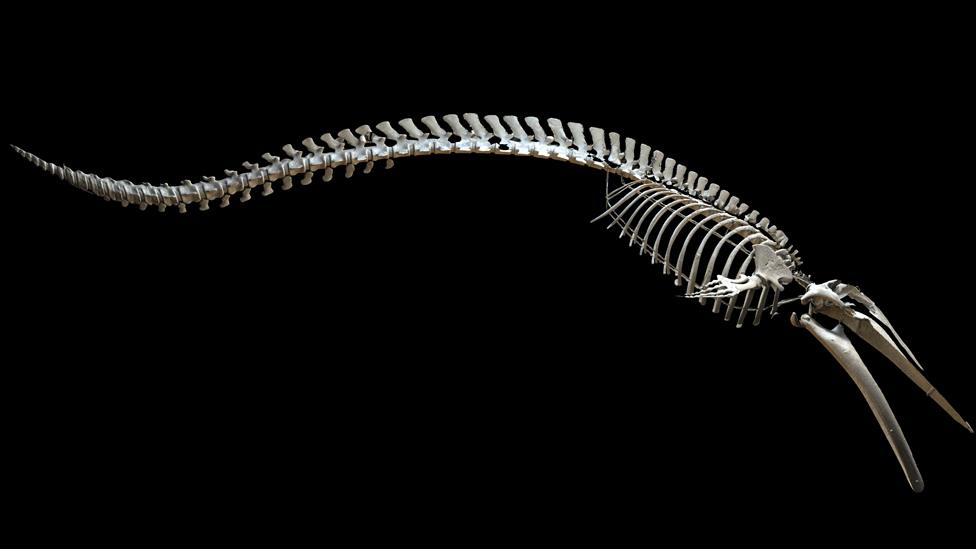
An initial scan has already been done but a bigger digitisation effort is about to get under way
The NHM wants the cetacean to be a new kind of emblem.
The museum expects the skeleton's display in Hintze Hall to increase the wow factor for visitors.
It also hopes the whale can convey better all the cutting-edge science it does on a daily basis.
But for fans of Dippy, the NHM is keen to stress the dinosaur will not be sidelined.
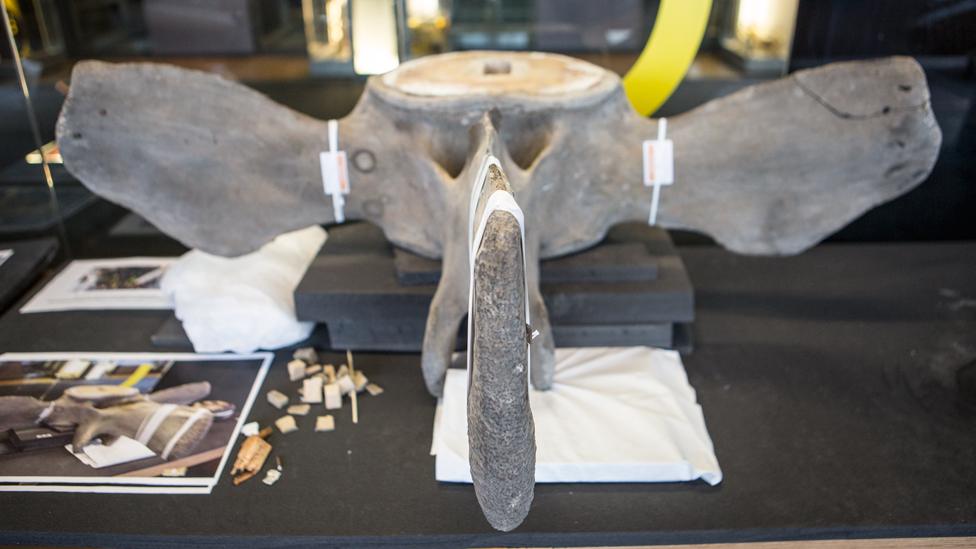
More than 100 years after the whale's death, its bones continue to ooze oil
Indeed, on its return to London the Diplodocus is likely still to enjoy star billing.
The museum plans to renovate and re-model the gardens that surround its buildings.
Dippy is set to be re-cast in bronze and be the first thing visitors see as they approach the institution from South Kensington tube station.
"In many ways, Dippy and the whale are tied together; I feel passionately about both of them," said Lorraine Cornish.
"They do different things but they are both part of our strategy to get people interested and excited about science, the natural world and the challenges we face."
BBC TV's Horizon programme is following the whale's preparation for its re-suspension in the NHM's front entrance. The episode will be broadcast next year around the time of the public unveiling.
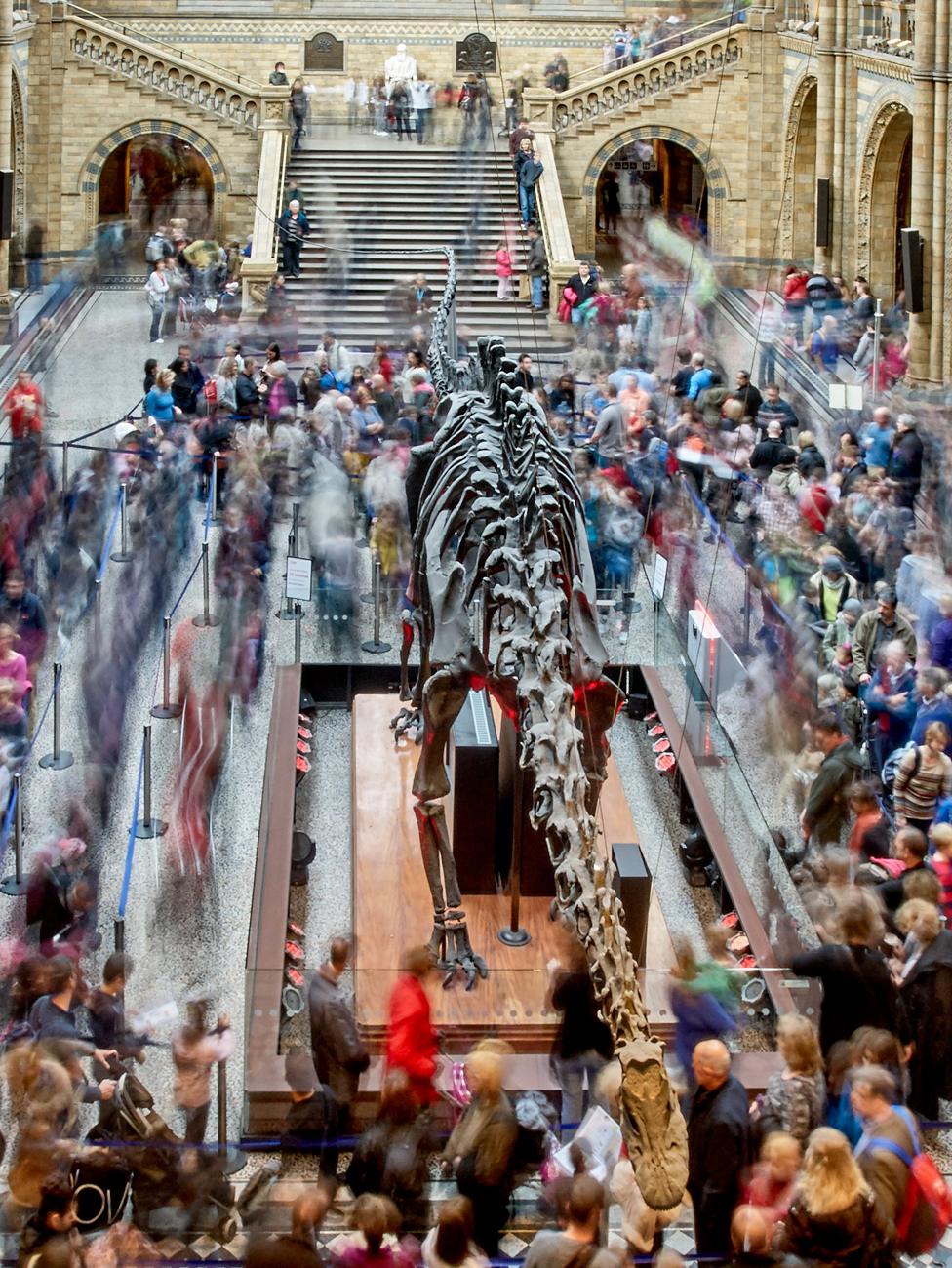
Dippy will very likely end up outside the front of London's NHM cast in bronze. It will form part of a new geology walk that greets visitors as they approach from South Kensington underground station
Jonathan.Amos-INTERNET@bbc.co.uk, external and follow me on Twitter: @BBCAmos, external
- Published24 September 2015
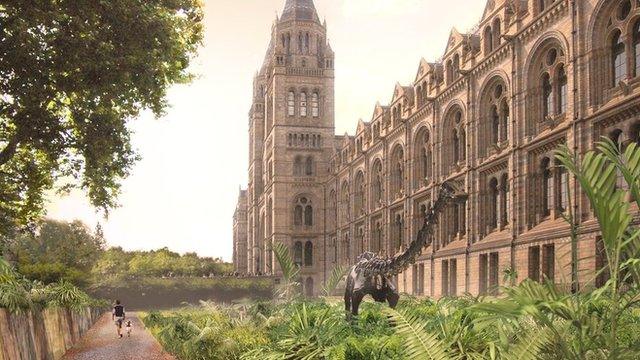
- Published29 January 2015
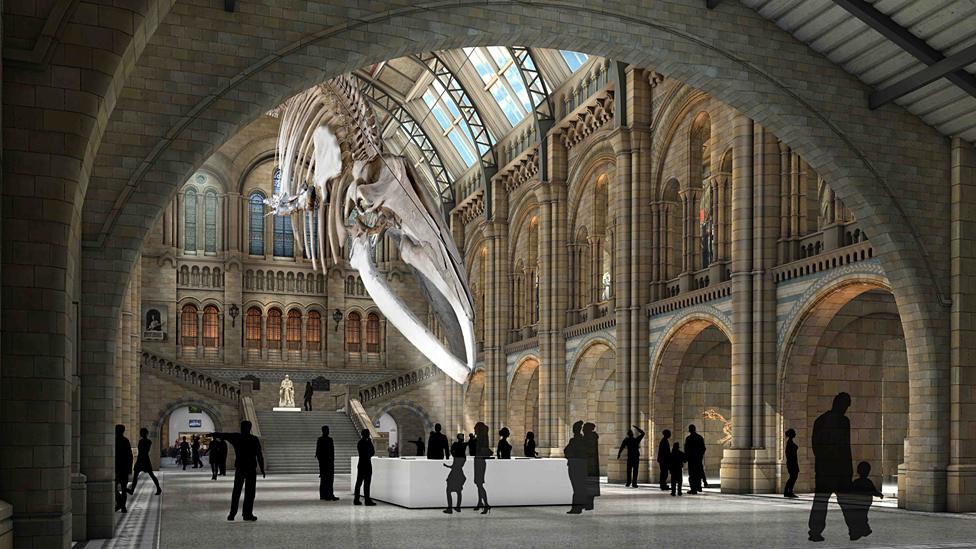
- Published29 January 2015
